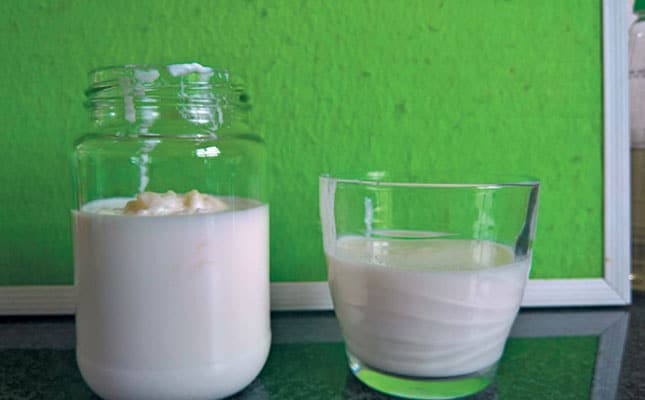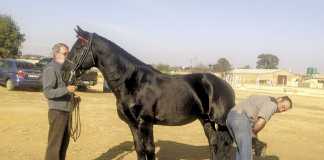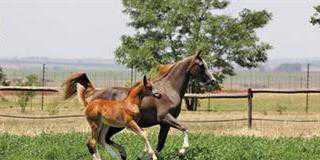
Horses evolved to graze at will, exercise freely and live in herds. Today, most horses are stabled, kept in tiny paddocks with little grazing, fed hard feeds and allowed little social contact.
One of the results of all this is gastric ulcers. Amongst the symptoms are a lack of appetite, changes in behaviour, generally poor condition and discomfort.
If your horse has ulcers, it might benefit from kefir, a yoghurt-like drink that originated centuries ago in the Caucasus.
The practice of fermenting milk is at least 12 000 years old. Originally milk was fermented merely to preserve it; the ‘good’ bacteria, lactococci and lactobacilli, suppress spoilage and pathogenic organisms.
People began to realise, however, that fermented milk has a good flavour and digests easily. This led to a variety of related products, such as cheese.
Kefir (pronounced kuh-FEAR) is a useful source of low-fat protein and is high in calcium, phosphorous and B-group vitamins. Volume for volume, kefir has three times the quantity of probiotics (benefical bacteria) than yoghurt, making it highly effective against harmful bacteria in the intestine.
Easy to make
Kefir can be made quickly and with little effort at home using fresh goat or cow milk. This can be full-cream or skimmed milk, either pasteurised or unpasteurised.
Simply pour the milk into a clean glass jar, allow it to reach room temperature, then add a small quantity of kefir granules (known as grains).
These look like cauliflower and are a blend of bacteria and yeast that ferment the milk. Don’t place the jar on a cold surface; I use a wooden chopping board and cover the top of the jar with a cheesecloth.
Leave the jar and its contents at room temperature for about 24 hours. Strain the kefir to remove the grains, keeping some to restart the next batch. The liquid is now ready for drinking, or to be added to oats for your horse.
A special recipe
To make lacto-fermented whole oats for a horse with suspected ulcers (or even a healthy horse), add a little water kefir (the strained liquid) to oats that have been left to soak in water, and leave for two days to brew. Feed a small quantity of the oats to the horse daily.
Alternatively, rinse milk kefir grains in fresh water for 24 hours, then strain off the solution (kefiraride). Add this to oats left to soak in water, and allow to ferment for a few days.
My horses prefer the first method. My stallion gets 100mℓ of kefir water, a teaspoon of cayenne pepper and a tablespoon of black strap molasses over its morning meal daily. This keeps its gut healthy and coat shiny.
Fermentation: the basics
Fermentation is the chemical conversion of carbohydrates into alcohols or acids. In fermented milk products, both alcohol and lactic acid may be produced, as is the case in kefir.
The bacteria ingest the lactose and release lactic acid as waste, causing the acidity to increase. This denatures the milk proteins, which then tangle themselves into masses (curds), while inhibiting the growth of acid-intolerant organisms.
Kefir grains grow continuously when cultured in fresh milk. You will therefore have to remove some from the batch to maintain a reasonable grain-to-milk ratio.
In doing so, you will also produce a kefir with a good consistency.
(Incidentally, the grains are delicious in a smoothie.)
Kim Dyson breeds Arabians and Lusitanos, and has 22 years’ experience in holistic equine and human body work.













